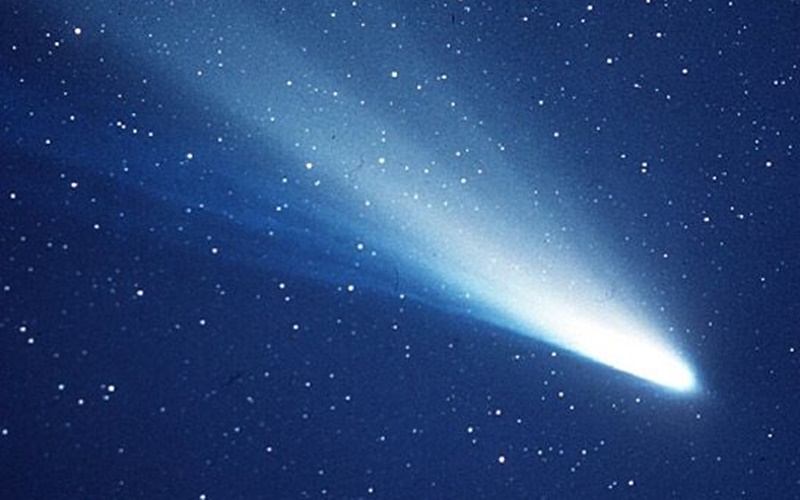Harianjogja.com, JAKARTA— Every 75 to 76 years, Comet Halley illuminates the sky by reaching its perihelion. The size and intrigue that surrounds it is so prominent that it is awaited throughout the history of mausoleum.
The last time it reached its perihelion, which is the point at which the comet is closest to the sun and most visible, was in 1986. Halley’s Comet is expected to return in mid-2061.
ALSO READ: One of the Big Comets is Heading towards Earth
Halley’s Comet is predicted to be much better than it was in 1986, because the comet will be on the same side of the Sun as Earth. Before enjoying it later, here are six facts about this anticipated astronomical event, reported from My Modern Met:
1. Been Seen Since 240 BC
Although there is some evidence from Pliny the Elder that Halley’s comet was seen during ancient Greece between 468-466 BC, the first recorded appearance was in 240 BC, as recorded in a Chinese historical text called Records of the Grand Historian.
2. Named From Astronomers
In 1705, a friend of Isaac Newton and fellow English astronomer Edmond Halley published a paper on comets entitled Synopsis of the Astronomy of Comets. In it, he explains that three different comet sightings actually return every 75 to 76 years. Halley’s Comet became the first comet to be recognized as a periodic comet and was named Halley in 1759 by the French astronomer Louis de Lacaille.
3. Made Of Ice and Rubble
A shooting star is actually just a big ball made up of space debris and ice. The same is true for Halley’s Comet. But in this case, most of the debris was held together by gravity. Recent observations prove that the comet is also covered in a layer of black dust.
4. Create Your Own Atmosphere
Every time Halley’s Comet approaches the sun, the ice covering its surface melts to create an atmosphere that stretches about 100,000 kilometers. Eventually, however, a gust of solar wind causes this atmosphere to turn into the comet’s long tail.
5. Halley’s Comet Coincides with Two Meteor Showers
Comet Halley is associated with two major meteor showers, the annual Orionids meteor, which usually occurs during a week in late October and the Eta Aquariids meteor shower in early May. Because the meteors were once part of Halley’s Comet but broke up hundreds of years ago. However, Halley’s Comet’s current orbit does not affect meteor activity.
6. Halley’s Comet is Shrinking
Although Halley’s Comet has a current mass of about 2.2 hundred trillion kilograms, scientists have calculated that it was once much larger. Each time a comet approaches the sun, it loses some of its mass. In fact, recent research shows that Halley’s Comet has lost between 80-90% of its original mass during 2 to 3,000 orbits. Over time, the comet will lose enough mass to completely disappear or be ejected from the solar system. However, this is still thousands of years away.
Source: JIBI/Bisnis Indonesia
– .


